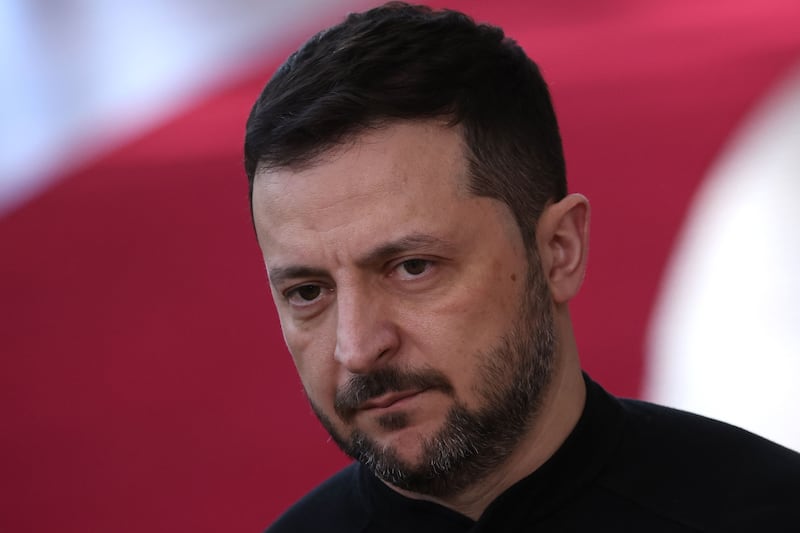Ukraine said Russia’s attack on its eastern Kharkiv region had ground to a halt and urged the West to send more arms and lift restrictions on how they are used, as Hungary said it wanted to “redefine” its position in Nato to opt out of alliance efforts to help Kyiv.
More than 10,000 people fled border areas of Kharkiv this month after Russia launched a rapid incursion and seized about a dozen abandoned or scarcely populated villages and attacked the towns of Vovchansk and Lyptsi.
“After its initial minor successes during offensive battles in Kharkiv region, the enemy has become completely bogged down in street battles for Vovchansk and suffered very high losses among assault unit personnel,” Oleksandr Syrskyi, Ukraine’s top military commander, said on Friday.
[ Russian spy chief claims Ukraine directly involved in Moscow concert hall attackOpens in new window ]
“The enemy is currently transferring reserves from various areas in an attempt to support active assault operations, but without success. In the Lyptsi district, the enemy has also suffered significant losses and switched to active defence,” he added.
Zelenskiy says Ukraine ‘fully committed’ to talks ahead of US meeting in Saudi Arabia
Trump’s supporters count themselves as conservatives, but what he’s doing is radical
Zelenskiy: Latest strikes on Ukraine show Russia’s objectives have not changed
Europe’s Trump whisperers: Starmer, Macron and Meloni seem like an odd grouping
Kyiv and military analysts say Russia hopes to stretch Ukraine’s outnumbered and outgunned forces in Kharkiv and potentially the neighbouring Sumy regions, to cause cracks in its defences further south in Donetsk province, where Moscow’s forces are pressing for a breakthrough near the towns of Chasiv Yar, Pokrovsk and Kurakhove.
“Intense fighting continues in the Ivanivske area and on the approaches to Chasiv Yar,” Col Gen Syrskyi reported, saying that Russian tanks and other armoured vehicles “are usually being destroyed by our anti-tank weapons and FPV drones”.
First-person-view drones are explosive-laden quadcopters that blow up on impact and are flown from several kilometres away by pilots who see a live video feed from cameras on the drone. Both sides use hundreds of the relatively cheap FPVs each week.
Ukrainian president Volodymyr Zelenskiy visited Kharkiv, which is home to about 1.3 million people, a day after seven people were killed and more than 20 hurt in a Russian missile attack on a printing house in Ukraine’s second city.
[ Ukraine decries ‘world’s weakness’ after Russia’s latest deadly strike on KharkivOpens in new window ]
“Russian terrorists are killing adults and children, destroying cities and villages, leaving scorched earth where normal life once was. Russian terror must lose. And for this, only one thing is needed – the determination of world leaders. Sufficient determination,” he wrote on social media after visiting the ruined printing house. “Sufficient air defence for Ukrainian cities and communities, sufficient long-range capabilities for our soldiers, sufficiently bold political decisions.”
Ukraine wants more western states to supply air defence systems and other weapons that are sitting in storage, and to allow it to use all arms provided to strike military targets inside Russia that pose a threat to Ukrainian territory.
[ Ask Ukraine about the value of Irish ‘solidarity’: it is €38.80 per weekOpens in new window ]
Hungarian prime minister Viktor Orban, who opposes sanctions on Russia and maintains ties with the Kremlin, said he wanted his country to opt out of Nato efforts to help Ukraine, which he claims are dragging the West towards direct war with Moscow.
“We’ve got to redefine our position within the military alliance, and our lawyers and officers are working on… how Hungary can exist as a Nato member while not participating in Nato actions outside of its territory,” he said.
- Sign up for push alerts and have the best news, analysis and comment delivered directly to your phone
- Join The Irish Times on WhatsApp and stay up to date
- Listen to our Inside Politics podcast for the best political chat and analysis















